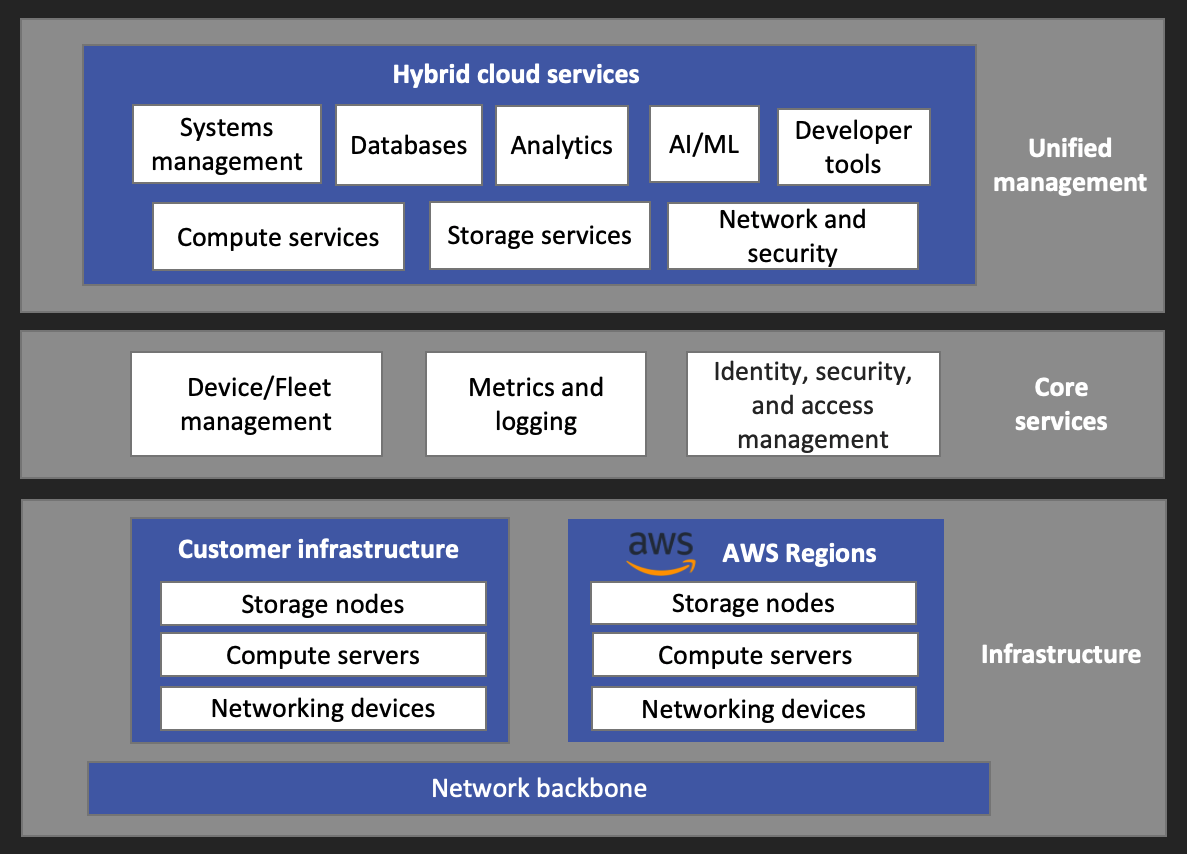This whitepaper is for historical reference only. Some content might be outdated and some links might not be available.
Operations and management framework for hybrid cloud with AWS
The operations and management framework detailed here identifies the building blocks for architecting and implementing a hybrid cloud environment with AWS. This framework helps you identify the components and the corresponding considerations for building a hybrid cloud with AWS. This section also identifies AWS services and solutions to address the needs for each building block.

Operations and management framework for hybrid cloud with AWS
AWS Outposts
Hybrid cloud infrastructure
Physical infrastructure deployed on-premises and in AWS Regions provide the infrastructural foundation for a hybrid cloud. The network interconnecting these infrastructures enables traffic exchange within the hybrid environment.
On-premises and AWS infrastructure
The customer infrastructure includes compute servers, storage nodes, networking devices, and edge computing devices. This infrastructure is hosted in customer-owned or leased facilities, manufacturing/retail facilities, or in spaces near end-users.
AWS global infrastructure
For on-premises infrastructure, you can deploy AWS hardware
through AWS Outposts. AWS also provides edge computing
infrastructure with
AWS Local Zones
Network
The network interconnecting on-premises infrastructure with AWS can be through dedicated physical connections, VPN, or over the internet.
With
AWS Direct Connect